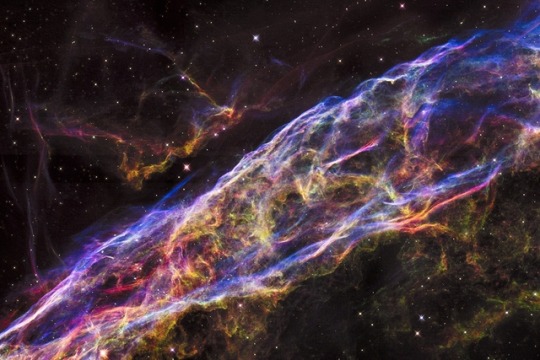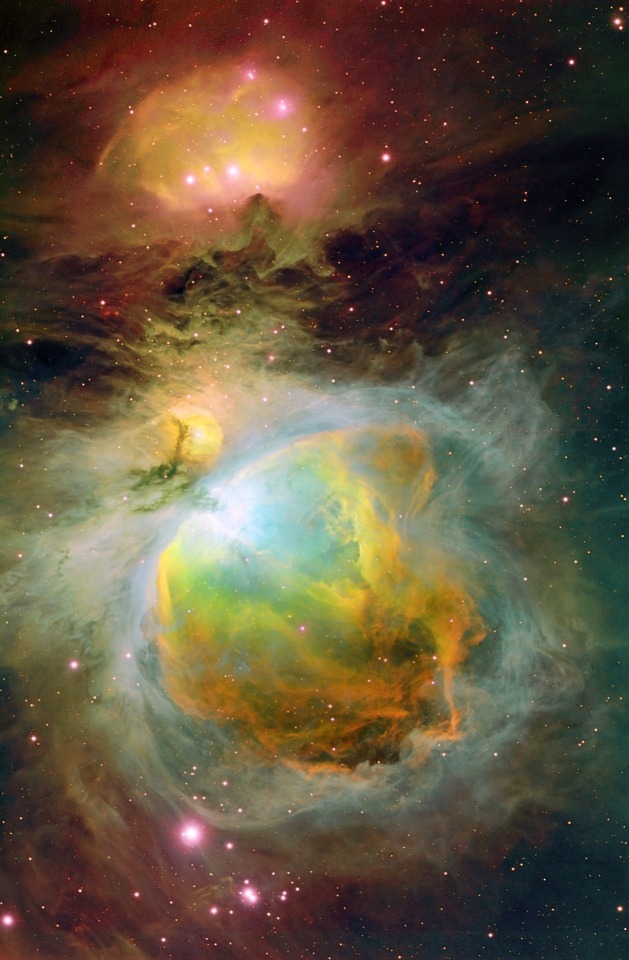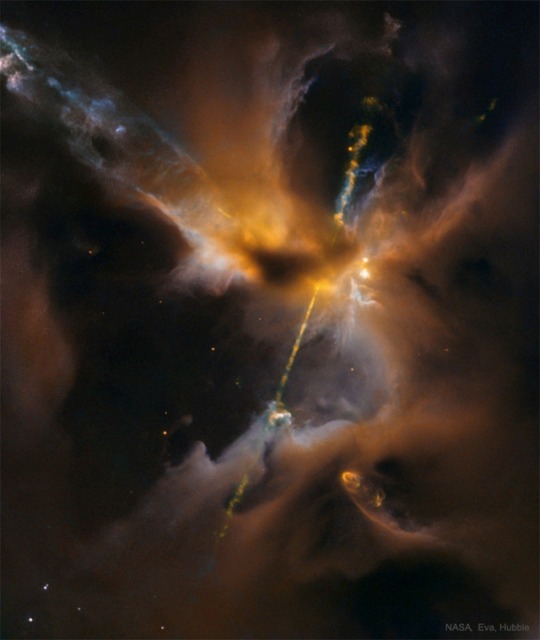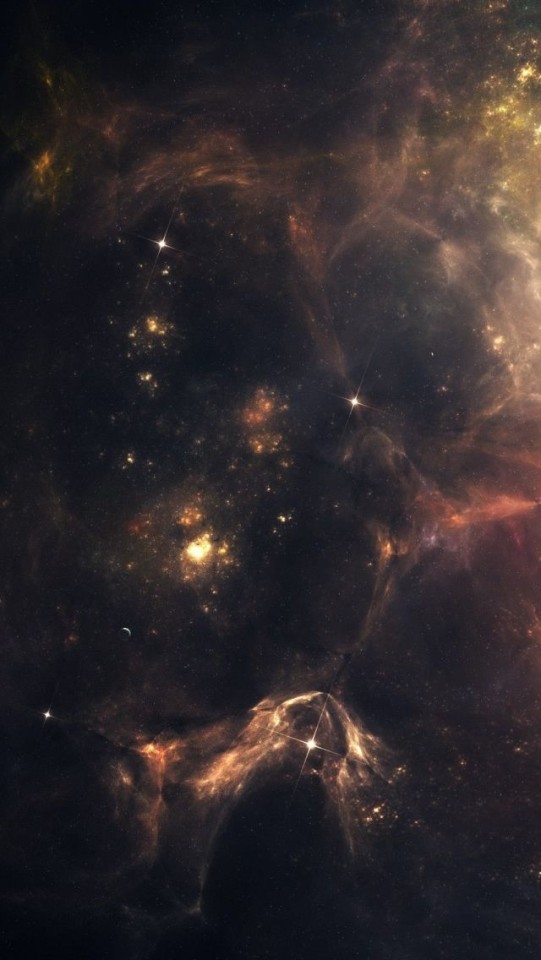Photo

💛🫦💛 #💛 #🫦 #rosalina #princessrosalina #tylerina #princesstylerina #galxyprnc #galxyprncs #lust (at Brandon, Manitoba) https://www.instagram.com/p/CgzZBysA2Qt/?igshid=NGJjMDIxMWI=
7 notes
·
View notes
Photo
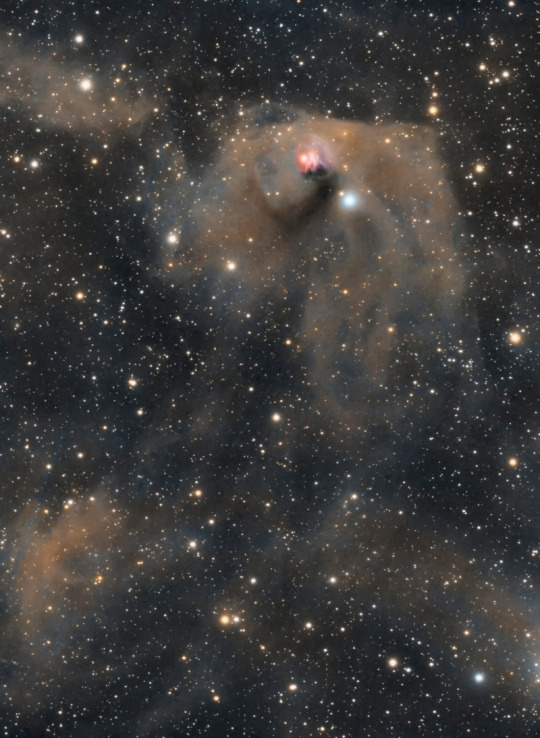
T Tauri and Hind s Variable Nebula via NASA https://ift.tt/ecigBGJ
The star with an orange tint near top center in this dusty telescopic frame is T Tauri, prototype of the class of T Tauri variable stars. Next to it (right) is a yellow cosmic cloud historically known as Hind’s Variable Nebula (NGC 1555). About 650 light-years away, at the boundary of the local bubble and the Taurus molecular cloud, both star and nebula are seen to vary significantly in brightness but not necessarily at the same time, adding to the mystery of the intriguing region. T Tauri stars are now generally recognized as young (less than a few million years old), sun-like stars still in the early stages of formation. To further complicate the picture, infrared observations indicate that T Tauri itself is part of a multiple system and suggest that the associated Hind’s Nebula may also contain a very young stellar object. The well-composed image spans about 8 light-years at the estimated distance of T Tauri.
(Published February 10, 2022)
32 notes
·
View notes
Text

M91 - Barred Spiral Galaxy
55 Million light years away in the constellation of Coma Berenices, this amazing galaxy with a large central bar and two main arms is a perfect example of how central supermassive black holes can impact on galaxies, and in particular, on the regions of star formation.
Along the arms, you can see the pink/blue regions which represent star forming nebula, while looking towards the centre, there is little at all.
M91 is thought to have a supermassive black hole several times larger than our Sag A* black hole at the centre of the Milky Way, and it's impact stretches much further two.
Despite the impact of the black hole, there are still large dust lanes extending into the bar, so there may still be some star formation, but overall, the black hole heats up the surrounding region, causing cold hydrogen to lose it's stickiness and stunt star formation.
The stars in the bar are far older, and likely started life on the outer edges of one of the arms, and slowly migrated inwards. Younger blue stars will die out long before they can migrate that far, leaving only the smaller yellow, orange and red dwarfs to make the trip.

above you can see M91 in Infra Red, the areas where most star formation are occurring is highlighted in the arms of the galaxy, and the accretion disk of the central black hole glows outwards over thousands of light years from the centre.
Just imagine when JWST turns it's attention to this guy.
86 notes
·
View notes
Photo
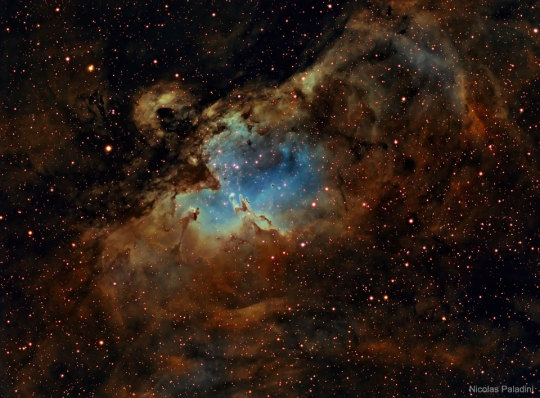
M16: Inside the Eagle Nebula : From afar, the whole thing looks like an Eagle. A closer look at the Eagle Nebula, however, shows the bright region is actually a window into the center of a larger dark shell of dust. Through this window, a brightly-lit workshop appears where a whole open cluster of stars is being formed. In this cavity tall pillars and round globules of dark dust and cold molecular gas remain where stars are still forming. Already visible are several young bright blue stars whose light and winds are burning away and pushing back the remaining filaments and walls of gas and dust. The Eagle emission nebula, tagged M16, lies about 6500 light years away, spans about 20 light-years, and is visible with binoculars toward the constellation of the Serpent (Serpens). This picture involved over 12 hours of imaging and combines three specific emitted colors emitted by sulfur (colored as red), hydrogen (yellow), and oxygen (blue). via NASA
570 notes
·
View notes
Text
WHAT IS THE BIGGEST THING IN THE UNIVERSE??
Blog# 172
Saturday, March 5th, 2022
Welcome back,
The biggest single entity that scientists have identified in the universe is a supercluster of galaxies called the Hercules-Corona Borealis Great Wall. It’s so wide that light takes about 10 billion years to move across the entire structure. For perspective, the universe is only 13.8 billion years old.
Space is all about large distances and objects.
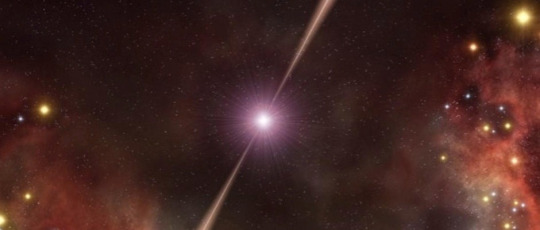
Earth is big to us, about 24,901 miles (40,075 kilometers) in circumference at the equator. But based on the cosmic scheme of things, Earth is tiny. Even in our own solar system, we are easily dwarfed by the planet Jupiter (which could fit more than 1,300 Earths inside) and our sun (which could fit more than a million Earths inside of it).
And while our sun seems huge, it looks puny compared to the biggest stars we know of. The sun is a G-type star or a yellow dwarf and a pretty average size on the cosmic scale. Some “hypergiant” stars are much, much larger. Perhaps the biggest star known is UY Scuti, which could fit more than 1,700 of our suns. (Some estimates for the size of UY Scuti put it lower on the list, but there are other gigantic stars of a similar size.)
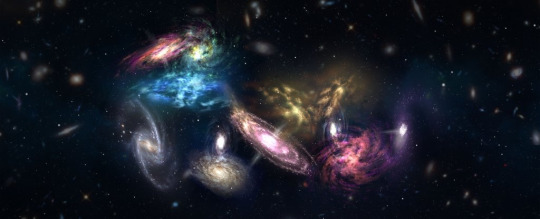
But while in diameter and circumference UY Scuti is enormous, it’s only about 30 times more massive than our sun: volume and mass don’t necessarily correlate in space.
Even more massive objects to consider are black holes and, in particular, the supermassive black holes that typically reside in the center of a galaxy. For example, the Milky Way hosts one that is about 4 million times the mass of the sun. One of the biggest supermassive black holes ever found resides in NGC 4889 and contains 21 billion times the mass of the sun. However, even the most massive black holes aren’t particularly large, since this type of structure is the densest in the universe.
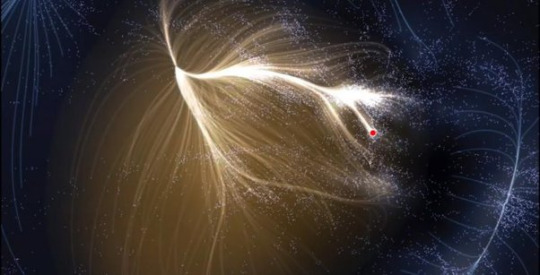
Nebulas, or vast clouds of gas that often condense to become new stars, also have impressively large sizes. NGC 604 in the Triangulum Galaxy is commonly cited as one of the largest; it’s roughly 1,520 light-years across.
Galaxies are collections of star systems and everything inside those systems: black holes, planets, stars, asteroids, comets, gas, dust and more. Our own Milky Way, if considered as one object, is about 100,000 light-years across. Scientists struggle to characterize the largest galaxies, because they don’t really have precise boundaries, but the largest galaxies we know of are millions of light-years across.

The biggest known galaxy, first described in a 1990 study from the journal Science, is IC 1101, which stretches as wide as 4 million light-years across, according to NASA.
Galaxies are often bound to each other gravitationally in groups that are called galaxy clusters. (The Milky Way, for example, is part of the small Local Group that comprises about two dozen galaxies, including the Andromeda Galaxy.) Astronomers once thought that these structures were the biggest things out there. In the 1980s, however, scientists realized that groups of galaxy clusters can also be connected by gravity, forming a supercluster, the largest class of objects in the universe.
Originally published on https://www.space.com
COMING UP!!
(Wednesday, March 9th, 2022)
“LARGEST EMPTY SPOT: SUPER VOID IN ERIDANUS??”
133 notes
·
View notes
Text

Sagittarius Star Cloud
Looking towards the centre of our Galaxy, the stars can appear as clouds, and set against this backdrop, dark clouds of dust and gas make the appearance of holes in the cloud, although they are far closer to us, than the stars in the background.
Stars in the foreground appear as blue colour of clusters, these are young hot blue giant stars, born in nebula's closer to home, while the stars in the background can't be individually resolved, making a cream like cloud. This is because the majority of stars towards the centre of our galaxy are much older, yellow, orange and red dwarf stars, having orbited the galaxy for billions of years and made there way towards the centre, something short lived blue giant stars cannot do in the life span, with the exception of course of the neutron stars and black holes they leave behind, eventually sinking towards the centre and the supermassive black hole, which slowly grows through mergers.
150 notes
·
View notes
Photo
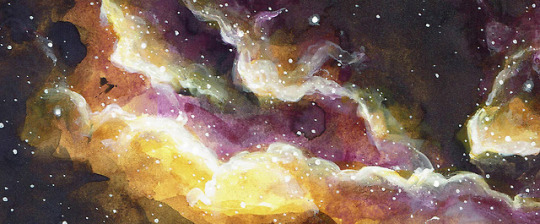

Two small spaceart made in the same time has the “Iris” space hanafuda.
8 notes
·
View notes
Photo

Birthplace. Nebula illustration for Project Aurora Vol 9. Check out the whole release at www.projectaurora.art.
#art #illustration #space #nebula #nebulea #stars #nasa #sciencefictionart #scifi #yellow #gold #clouds #fractal #glow #sparkle #projectaurora #collective #digitalart
https://www.instagram.com/p/CTPK9cfNPZZ/?utm_medium=tumblr
6 notes
·
View notes

